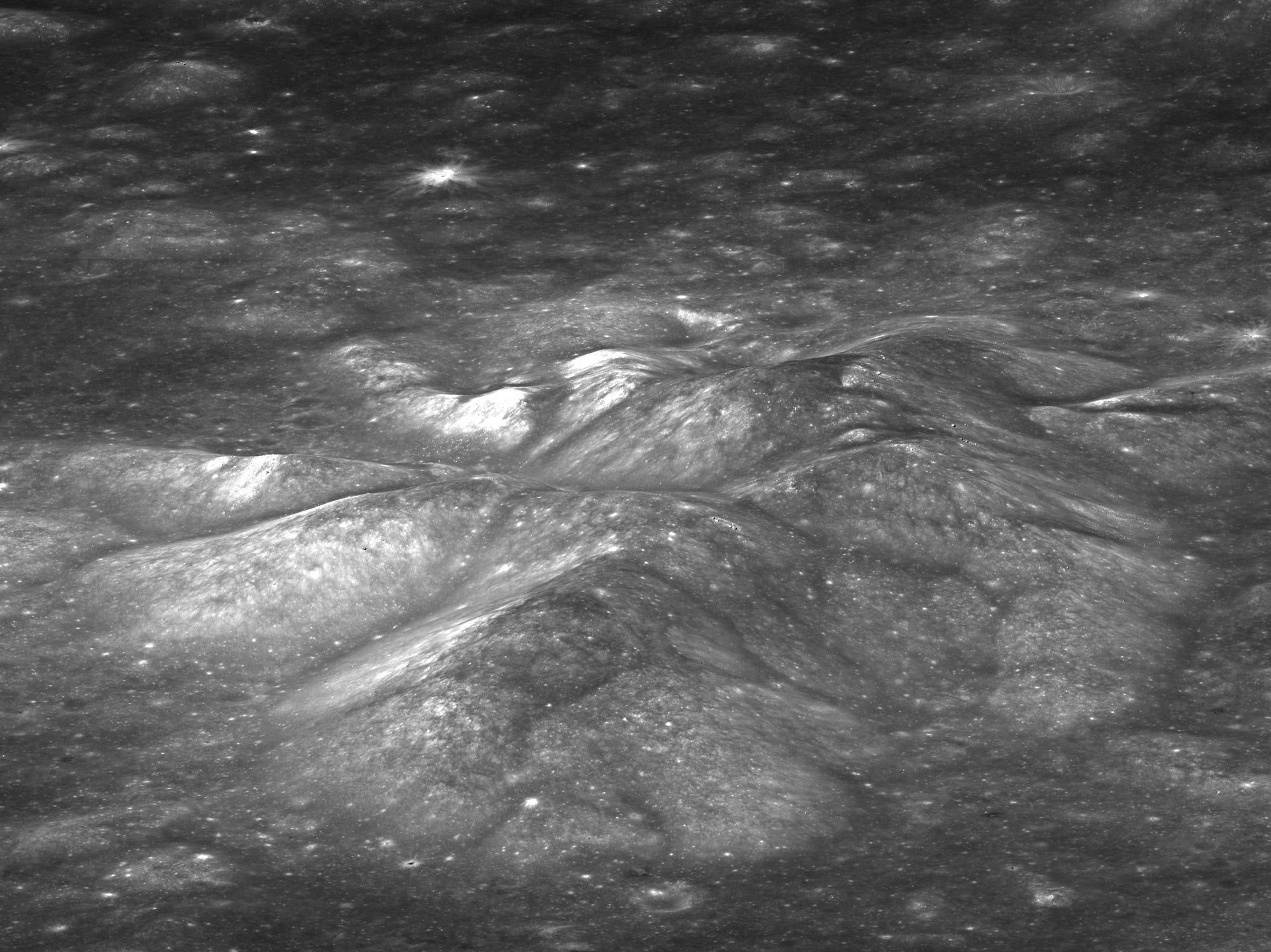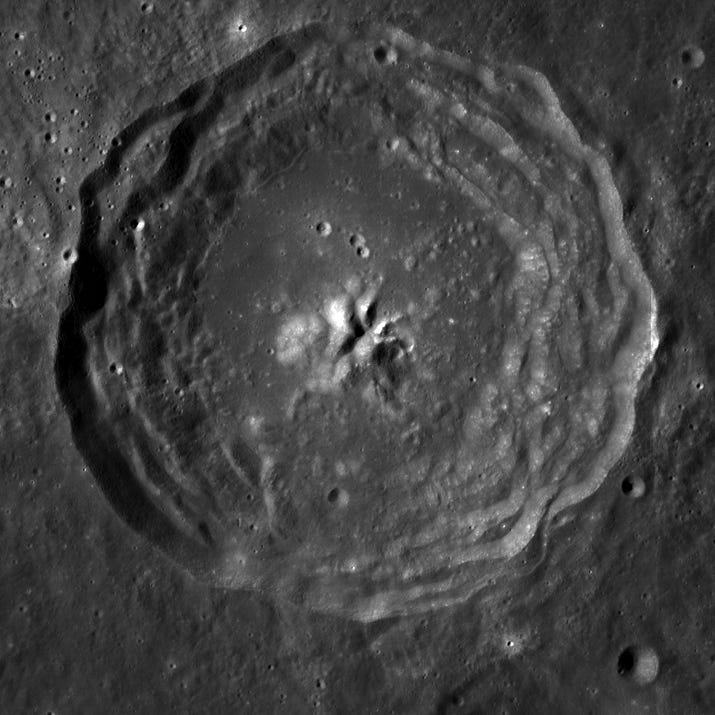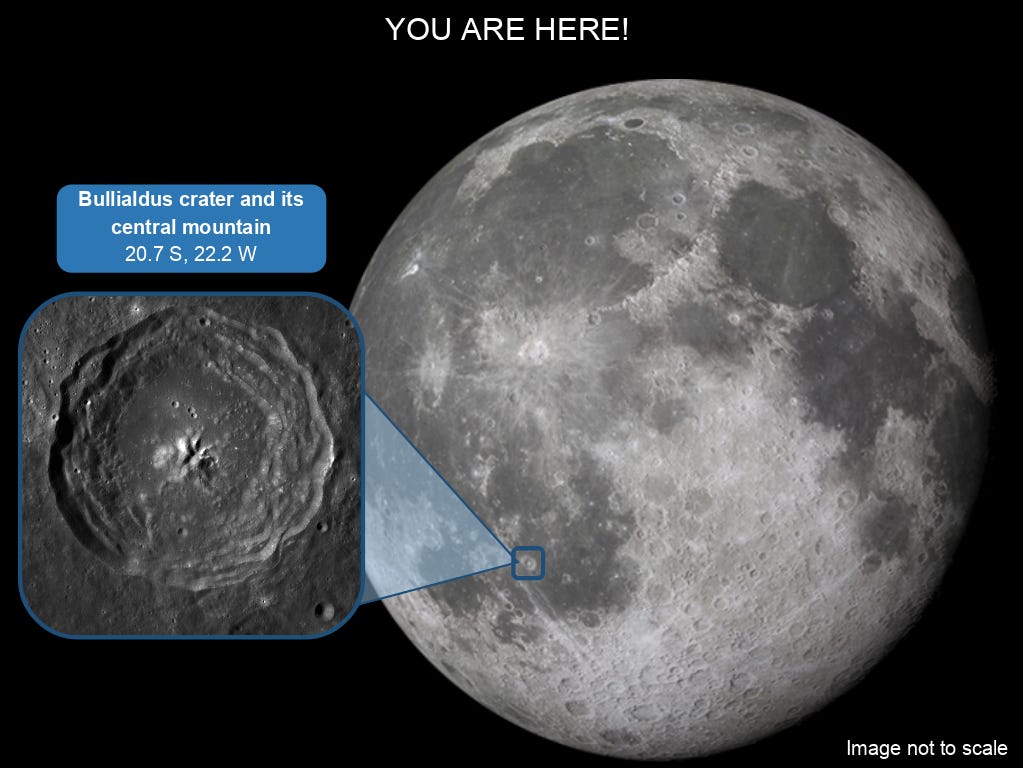The central mountain of Bullialdus and finding water on it
Seen here is the central mountain of the crater Bullialdus. Its composition offers a peak (pun intended) into the lunar interior.

Much like the case of Tycho, the central mountain of Bullialdus is formed by an asteroid impact. The impact melted and compressed the Moon's crustal material at the impact point, which then bounced back up. Such materials excavated from the lunar interior rise up as mountains!

Studying what central mountains in craters are made of is key to understanding the Moon’s interior. And that is exactly what happened when India's Chandrayaan 1 orbiter took a peak (pun intended again) at Bullialdus.
NASA had a science instrument onboard Chandrayaan 1, called the Moon Mineralogical Mapper. It imaged the crater in infrared to identify materials excavated from deep within the Moon’s crust. And it found water-bearing minerals in the central mountain but not in any other parts of the crater. These trace quantities of water on the mountain provided scientists ideas about the Moon’s interior.
For the more curious, read how NASA and Chandrayaan discovered water on the Moon.
Visiting Bullialdus crater in future lunar missions will reveal further the nature of materials of its central mountain and also give insights into mechanics of how an impact crater forms. Which is why Bullialdus crater was a NASA Constellation Region of Interest in their envisioned return to the Moon.

